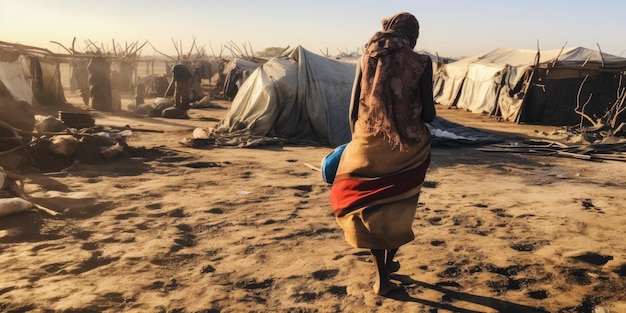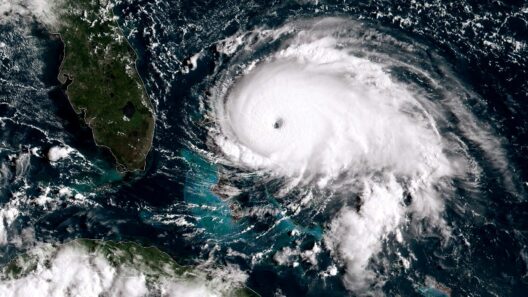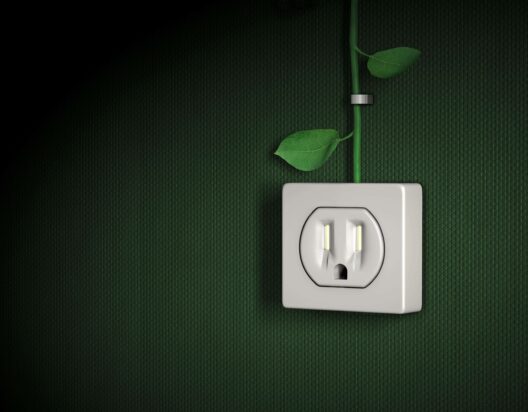Water is the essence of life, a precious resource upon which all forms of existence depend. Yet, as global temperatures rise and climate patterns shift, a palpable threat looms over our planet — one that leaves the world visibly parched. How can we combat the consequences of climate change while ensuring that every individual has access to this fundamental necessity? This pressing question leads us to explore the intricate relationship between global warming and water scarcity.
Global warming, a direct consequence of human-induced greenhouse gas emissions, is inciting a transformation in weather patterns worldwide. Among the most alarming effects of these changes is the escalating frequency and intensity of droughts. Drought is not a mere absence of water; it represents a complex intersection of environmental and social challenges, culminating in dire water shortages that exacerbate existing inequalities.
The mechanisms through which climate change catalyzes water scarcity are multifaceted. For one, elevated temperatures stimulate evaporation rates from lakes, rivers, and soil, essentially drying up crucial freshwater resources. Simultaneously, erratic precipitation patterns have emerged, leading to instances of both torrential downpours and prolonged dry spells. Regions that traditionally enjoy reliable rainfall are increasingly encountering unpredictable weather, leaving communities vulnerable to water shortages and agricultural failures.
This disruption does not occur in isolation. The World Health Organization warns that water scarcity affects over 2 billion people globally, with that number projected to increase as climatic conditions deteriorate. Vulnerable populations in arid regions, particularly in parts of Africa, Asia, and Latin America, face the most acute risks. They are often reliant on rain-fed agriculture and have few alternatives for water supply, making them particularly susceptible to the whims of a changing climate.
Urban areas are not immune to these challenges either. Rapid urbanization coupled with climate change has created a perfect storm for urban water crises. Cities are experiencing surging populations, which increase the demand for water while simultaneously polluting local sources. Combined with reduced water availability due to climate shifts, many cities are grappling with the pressing issue of water management and sustainability.
As droughts become more pervasive and prolonged, the issue of food security surfaces as another layer of complexity. Agriculture consumes approximately 70% of freshwater resources globally. When water becomes scarce, crop yields diminish, leading to food shortages, inflated prices, and heightened conflict over dwindling resources. The irony is striking: as the planet warms, the very systems that sustain us through agriculture begin to falter.
In this context, the agricultural sector must be reimagined. Innovative practices such as climate-smart agriculture can help farmers adapt to changing conditions. Techniques such as conservation tillage, crop rotation, and the use of drought-resistant crop varieties can enhance water efficiency and productivity. Yet, these solutions must be supplemented by robust policies that prioritize sustainable water management, ensuring that both rural and urban communities have equitable access to water.
Technology offers a glimmer of hope in our quest to address water scarcity. Desalination plants, which convert seawater into freshwater, represent a tangible solution, particularly for coastal communities. However, they require significant energy resources and investments, raising questions about their long-term sustainability and environmental impact. On the other hand, rainwater harvesting systems can empower individuals and communities to capture and utilize precipitation, reducing dependence on external water sources and enhancing resilience against drought.
Nevertheless, innovation alone cannot resolve the crisis. There exists a dire need for policymakers to implement strategic frameworks aimed at managing water resources holistically. Integrated water resource management (IWRM) encourages collaboration among stakeholders, ensuring that water is utilized efficiently across various sectors, including agriculture, industry, and domestic use. Ensuring the health of ecosystems that provide crucial natural services will also be integral to maintaining a sustainable water supply.
Moreover, education and awareness must underpin these strategies. Engaging communities in conversations about water conservation and climate resilience fosters a sense of collective responsibility. Empowering individuals to adopt water-saving practices at the household level can lead to significant cumulative effects. Simple actions, such as fixing leaks, utilizing water-efficient appliances, and implementing sustainable landscaping practices, can contribute to alleviating water pressure extant in many regions.
Adopting a global perspective is essential. Countries must engage in cooperative agreements to share resources and technology, especially in transboundary water systems. Initiatives aimed at preserving watersheds, implementing better land-use practices, and restoring degraded landscapes can promote a more sustainable and equitable distribution of water resources. These cooperative measures are not only crucial for individual nations but intangible assets for collective global stability.
The challenge of water scarcity in a warming world is monumental, yet it is not insurmountable. As global citizens, we must rally together to advocate for systemic changes and sustainable practices. The question stands starkly before us: Can we ensure a hydrated future for all, or will we witness a parched planet, struggling under the weight of our inaction? Time will tell, but the call to action is unequivocally clear — the time to act is now.






